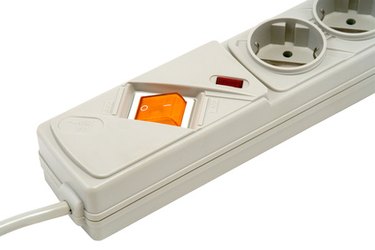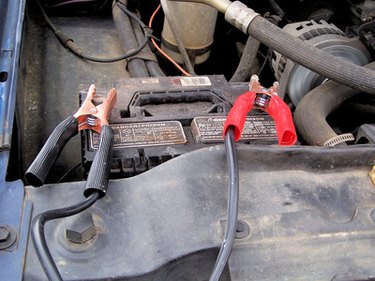Things You'll Need
Power inverter (1000 watts or greater)
Automotive battery
Surge protector

Automotive batteries provide starting power for an automobile and serve as the electrical grounding source for its electrical system. Due to advances in electronic technology, an automobile battery can also serve as a temporary power source for a small home. Since most household appliances require alternating current as an energy source, an electronic device called a power inverter must be connected to the automotive battery before using in the home.
Step 1

Attach the black power inverter input clamp to the negative ("NEG" or "-") battery post. Attach the red power inverter input clamp to the positive ("POS" or "+") battery post.
Video of the Day
Step 2

Plug the surge protector into the power inverter outlet. Turn on the power inverter and allow the components inside the inverter to charge up.
Step 3
Turn the surge protector switch on. Plug the electrical devices (electric lamps, televisions, DVD players, etc.) into the surge protector outlets.
Tip
Power inverters are listed for sale with two ratings: continuous power and peak power. "Continuous power" is the maximum sustained working load of the inverter circuitry. "Peak power" is the maximum load an inverter can support for a brief (less than one minute) time. Electrical load can be calculated by multiplying voltage (120 VAC in North America) by electrical current draw. For example, a typical laptop power supply will list the power rating as "120 VAC, 1.5 A." This power supply requires 180 watts of power. The power requirements are usually listed on a decal attached to the appliance or device at the power cord.
Warning
Do not exceed the power inverter peak power rating. Doing so will damage the power inverter and may pose a fire hazard.
Video of the Day